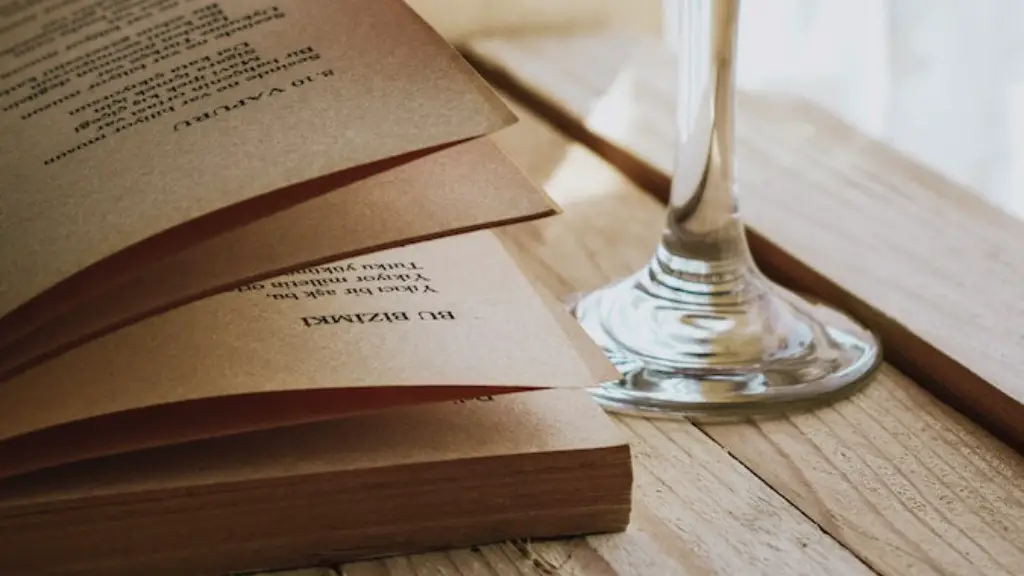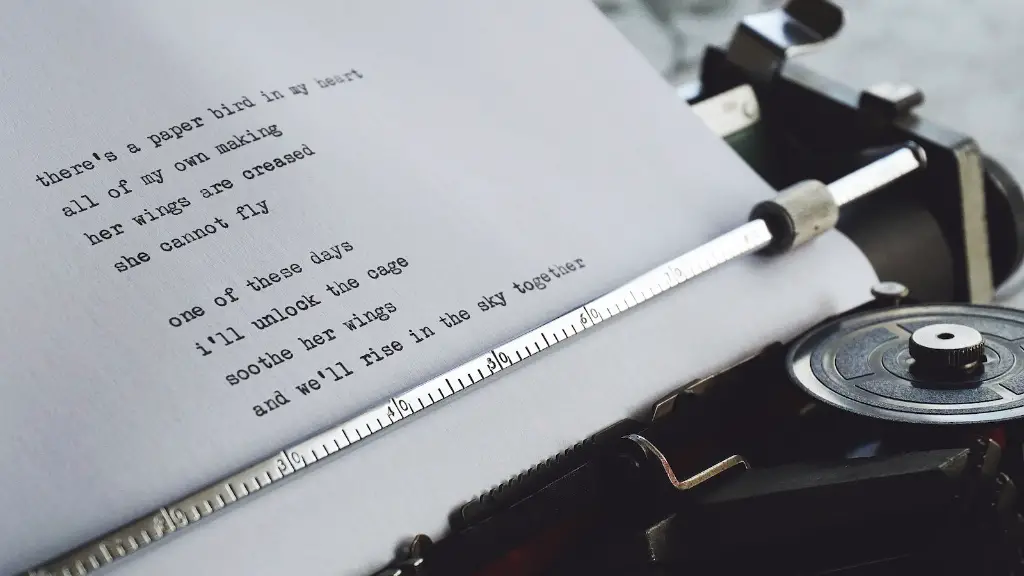Most people are aware of the fact that poetry is a form of literature that consists of creative and sometimes musical language; however, they may not be as familiar with the terms used to describe different components. One of the key terms used to describe poetry is a line. A line of poetry is a group of words that are put together in a single line in poetry. It’s important to note that a line of poetry is different than a sentence; instead, it is used to express emotions or concepts that can’t be put into words.
A line of poetry, also known as a poetic line, is typically groupings of words that create a rhythmic pattern, flow, and emotion. This can be created through alliteration, rhyme, and other literary devices. In other words, a line of poetry serves as a building block for the poem, as it helps to convey the meaning of the poem.
Though a line of poetry is sometimes made up of one sentence, or a single line, it can also be much longer. In fact, some lines of poetry can span several pages. For example, a long narrative poem like John Milton’s Paradise Lost contains long lines of poetry.
Another important element of a line of poetry is meter. Meter is the way in which the words are stressed and pronounced in a poem, and it can also create a type of rhythm. Examples of meter include iambic pentameter, trochaic, and anapestic. A line of poetry is not typically a consistent meter, and one line may contain several different meters.
Aside from meter, the structure of a poem is also an important element to consider when examining a line of poetry. Every poem is structured in a unique way, and that structure can tell you a lot about the poem’s meaning. For example, some poems are written in a specific form such as a sonnet or haiku, while other poems may have a more free-form structure.
To understand a line of poetry, it is important to have a knowledge of the basic elements of poetry, such as meter, structure, and imagery. Without these elements, the poem may not have the same impact. As with all forms of literature, readers need to actively engage with the poem in order to uncover its hidden meanings.
Imagery in a Line of Poetry
An important element of a line of poetry is its imagery. An author uses imagery to create a vivid picture in the reader’s mind. This is often done through the use of descriptive words, which evoke strong emotions. By creating a rich image in the reader’s mind, the poet is able to convey a feeling or idea through the use of words alone.
For example, in a line of poetry from Robert Frost’s Stopping By Woods on a Snowy Evening, he writes “The woods are lovely, dark and deep.” The phrase “lovely, dark, and deep” evokes a sense of mystery and beauty, while the word “woods” conjures up imagery of a forest. It is through the use of imagery that the poet is able to create a vivid image in the reader’s mind.
The Role of Rhyme in a Line of Poetry
Rhyme is another important element to consider when looking at a line of poetry. Rhyme is the repetition of similar sounds at the end of two or more words, which adds emphasis or significance to certain words or phrases. For example, William Shakespeare wrote the famous lines, “Shall I compare thee to a summer’s day? Thou art more lovely and more temperate.” The rhyme in this line adds emphasis to the words “day” and “temperate,” and helps to create a smoother flow and rhythm.
When examining a line of poetry, it’s important to look for rhymes as well as other elements such as meter, structure, imagery, and language. All of these elements together help to create a unique and powerful impact on the reader.
Exploring the Impact of a Line of Poetry
A line of poetry can have an immense impact on the reader. A powerful line of poetry can evoke emotion, create an image in the reader’s mind, and spark a meaningful conversation. For example, T.S Eliot’s famous line “April is the cruelest month” is an example of how a single line of poetry can have an immense impact on the reader.
By exploring a line of poetry and its various elements, a reader can gain a greater understanding of the poem’s meaning and its intent. Thus, it is important for poets and readers alike to understand the various components of a line of poetry and how they work together to create an overall impact.
Analysing the Language of a Line of Poetry
The language used in a line of poetry is also an important element to consider when analysing a poem. A line of poetry may consist of different forms of language, such as figurative language, poetic devices, and allusions. All of these elements are used to create imagery, evoke emotions, and enhance the overall meaning of the poem.
For example, in John Donne’s poem “Death Be Not Proud,” he uses the phrase “Mighty and dreadful” to refer to death. This phrase evokes a sense of fear and dread in the reader, and helps to emphasize Donne’s message that death should not be feared. Thus, the language used in a line of poetry is an important element to consider when analysing a poem.
The Role of Poetic Devices in a Line of Poetry
In addition to language and imagery, poetic devices are also an important component of a line of poetry. A poetic device is an expressive or rhetorical phrase or figure of speech that is used to create a certain effect or emphasis. Examples of poetic devices include alliteration, assonance, and metaphor.
For example, in William Wordsworth’s poem “Daffodils,” he uses the poetic device of alliteration to emphasis the words “dancing” and “daffodils.” This connection creates an image of the daffodils dancing in the reader’s mind, and helps to create an even stronger impact. Thus, poetic devices are an important element to consider when looking at a line of poetry.
The Value of a Line of Poetry
Throughout the centuries, poets have used lines of poetry to express their thoughts, feelings, and ideas. A line of poetry can tell a story, evoke emotion, and enliven the reader’s imagination. By understanding the various components of a line of poetry and how they work together, readers and writers alike can gain a greater appreciation for the power of poetry and the impact it can have.
In today’s world, poetry is more important than ever. By reading and writing poetry, readers and writers can explore their own thoughts and feelings in an engaging and creative way. Poetry can also provide a space for people to explore the ideas of others, and even find comfort in times of difficulty. Lines of poetry have the power to enliven the reader and create an emotional connection that can last a lifetime.




